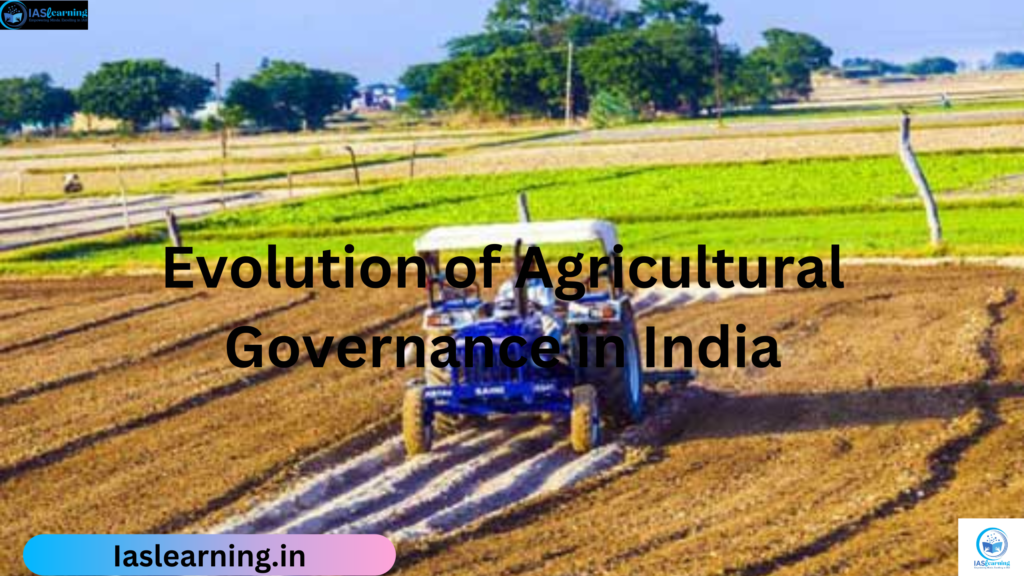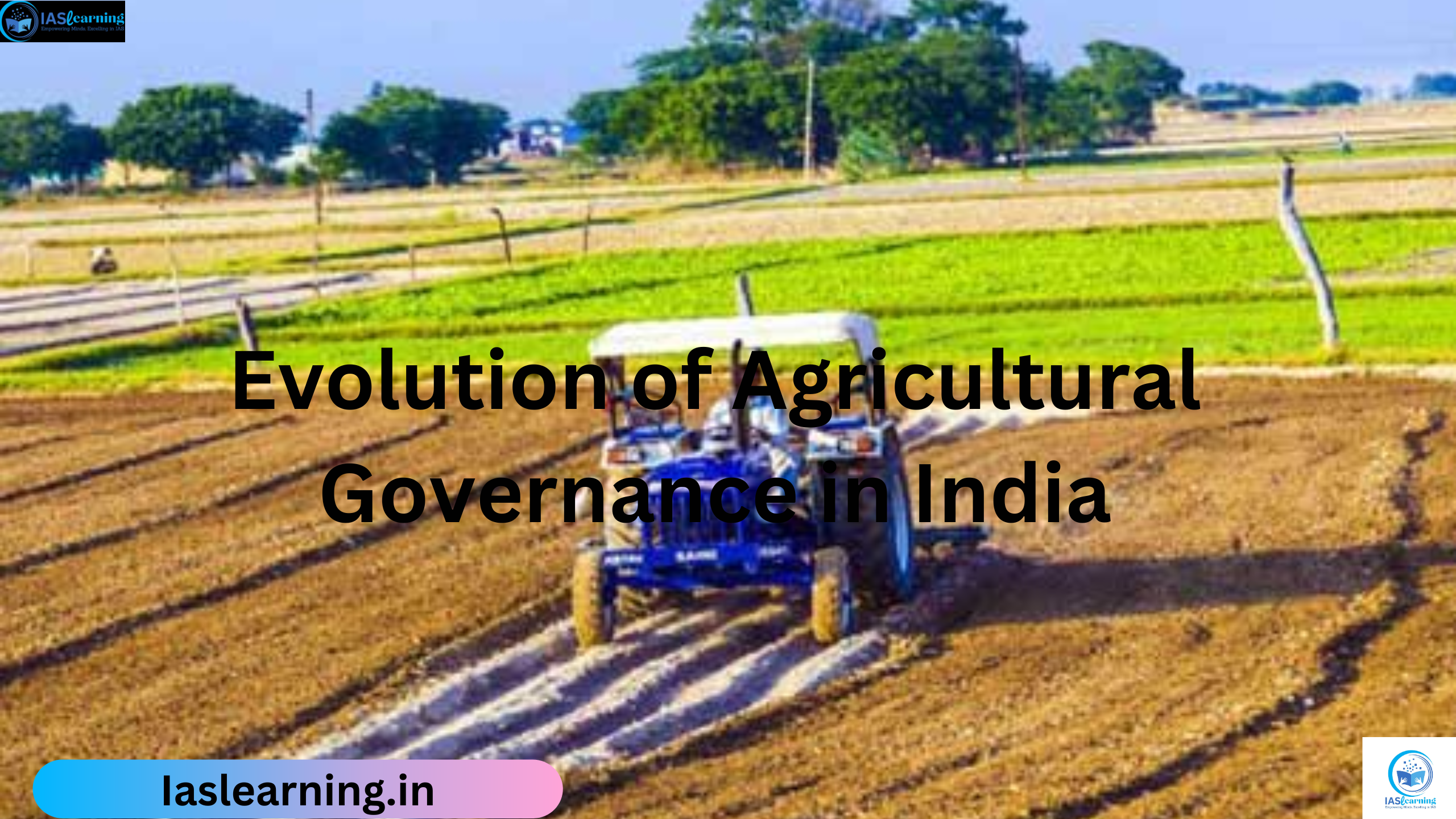Context: With independence, India's approach to agricultural administration has changed dramatically, with the Ministry of Food and Agriculture becoming a single, unified ministry instead of a collection of smaller, specialized ministries. This comprehensive research discusses the advantages of a more integrated approach to agricultural management in India, looks at the existing fragmented structure, and digs into the historical trajectory.
Historical Evolution of Agricultural Governance in India

Consolidation and Early Successes
- The Ministry of Food and Agriculture was a unified body in the early years of Indian independence, led by important individuals like Rajendra Prasad and subsequently by ministers like C Subramaniam and Jagjivan Ram.
- With the establishment of the Agricultural Prices Commission, the Food Corporation of India, and the facilitation of the import of high-yielding wheat .seeds from Mexico (Sonora 64 and Lerma Rojo 64A), Subramaniam in particular was instrumental in kicking off the Green Revolution. These actions were essential for improving agricultural procurement and setting minimum support prices.
- The ministry was enlarged in 1966 to encompass community development and collaboration under Prime Minister Indira Gandhi. The Ministry of Irrigation was united with it in 1974, indicating a comprehensive approach to agricultural concerns, including water management.
For more : What is the concept of Nation and State?
What is Constitutionalism And Consitutional Morality
Period of Fragmentation
- But starting in the middle of the 1970s, the ministry started to disintegrate.
- Fertilizers (December 1975), irrigation (January 1980), food & civil supplies (February 1983), and rural development (August 1979; formerly known as rural reconstruction) were all broken off from the original agricultural ministry.
- The focus and responsibilities previously held by the Ministry of Agriculture were further distributed with the creation of the Ministry of Food Processing Industries in 1988 and the Agricultural and Processed Food Products Export Development Authority under the Ministry of Commerce in 1986.
- The Ministry of Commerce is also in charge of the numerous statutory commodities boards for tobacco, coffee, tea, rubber, spices, and tea. The Ministry of Textiles and the Ministry of Environment, Forests, and Climate Change, respectively, are in charge of the Cotton Corporation of India (CCI) and the Genetic Engineering Appraisal Committee (GEAC), respectively.
- Further division was evident with the creation by the Narendra Modi-led administration of a separate Ministry of Fisheries, Animal Husbandry and Dairy in 2019 and a Ministry of Cooperation in 2021.
- These days, other ministries or specialized governmental entities are in charge of important sectors like fertilizers, water management, and rules pertaining to genetically modified crops, leaving the Ministry of Agriculture with less direct duties.
Impacts of Fragmentation
- Distribution of Responsibilities: Currently, several ministries and departments handle crucial tasks such fertilizer management, irrigation, MSP procurement, and agricultural research. For instance, FCI and CCI, which answer to various ministries, handle the marketing and MSP purchase of cotton and food grains.
- Difficulties Raised by Division: This dispersion causes issues with coordination, inconsistent policies, and inefficiency when it comes to meeting the sector’s overall demands. For example, rules pertaining to agricultural cultivation and water management are not linked, resulting in less than ideal results.
For more :Catalytic Boost for Cheaper Biodiesel Production
Comparative Analysis with the USDA Model
- The United States Department of Agriculture (USDA) presents an alternative model known as the Integrated Approach. Under this model, public policy pertaining to farm production, land conservation, food, nutrition, research, marketing, international trade, and rural development—which includes entrepreneurship, housing, and utilities—is handled by a single federal agency.
- The US President is the immediate boss of the single secretary of agriculture, often known as the minister.
- In addition, the US Environmental Protection Agency and the US Food and Drug Administration collaborate with the USDA to regulate genetically modified agriculture (GM) based on scientific evidence and the final product’s safety for human, plant, and animal health.
Proposals for Structural Reform in India
Reintegrating Agricultural Functions
- Combined Ministry The idea is to reorganize agricultural duties under a single ministry that would be in charge of everything from crop insurance and rural development to soil health.
- Benefits of Reintegration: This strategy would increase policy consistency, expedite decision-making, and provide the government more power to handle broad challenges like climate resilience, farmer welfare, and sustainability.
Policy Recommendations
- Enhanced Political and Administrative Will: To be effective, change would need strong political backing, similar to that of the Shastri era, as well as a dedication to completely restructure the current system.
- Involving farmers, agricultural scientists, and business leaders in order to make sure that the reorganized ministry is receptive and customized to meet the many demands of India’s farming community is known as stakeholder engagement.
conclusion
In conclusion, the development of the Indian Ministry of Agriculture is indicative of larger patterns in government management, where fragmentation is frequently the result of specialization.
While this may sharpen attention to particular problems, it may also make coordination more difficult and reduce overall efficacy in fields where integrated methods are necessary.
The Agriculture Ministry’s efficiency and influence might be increased by reviewing its structure and role, which would also make it more equipped to respond to the present issues facing Indian agriculture.
For more : Evolution of Judiciary During British Times
